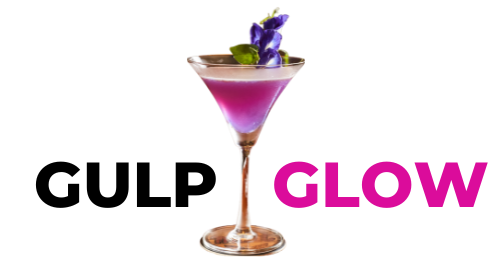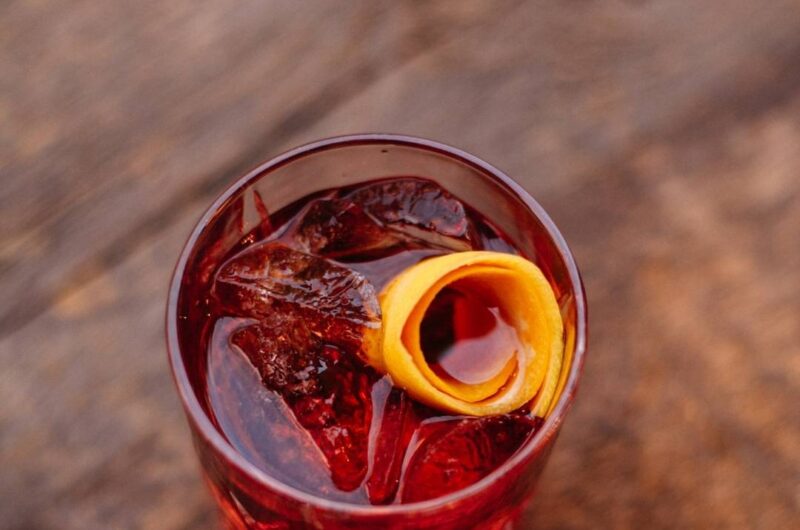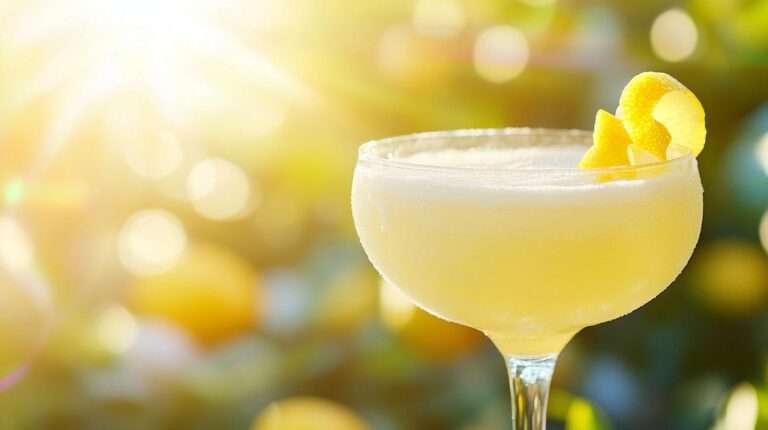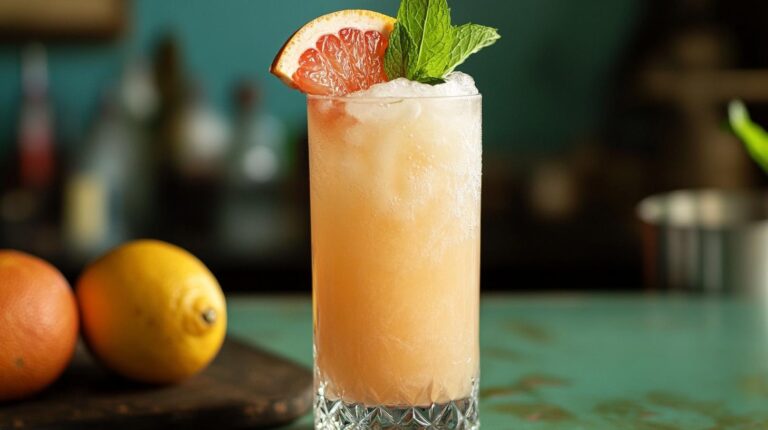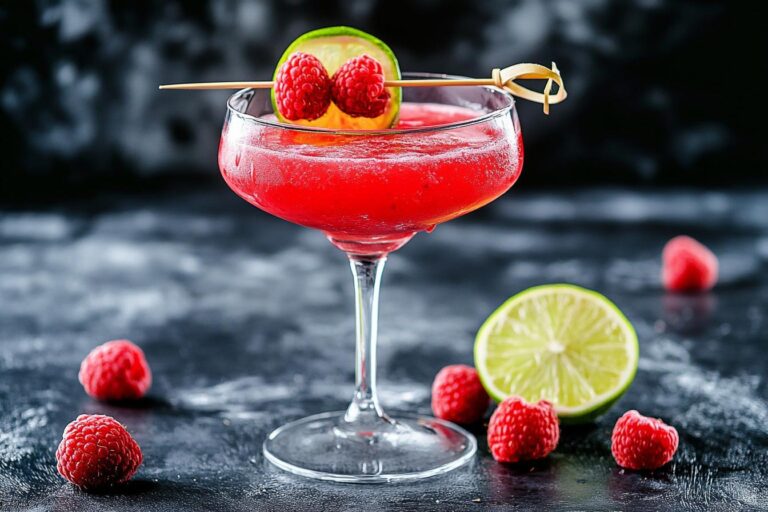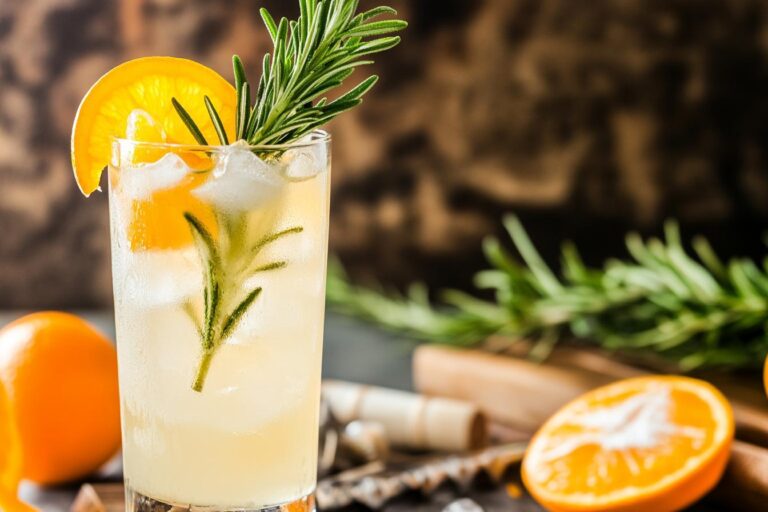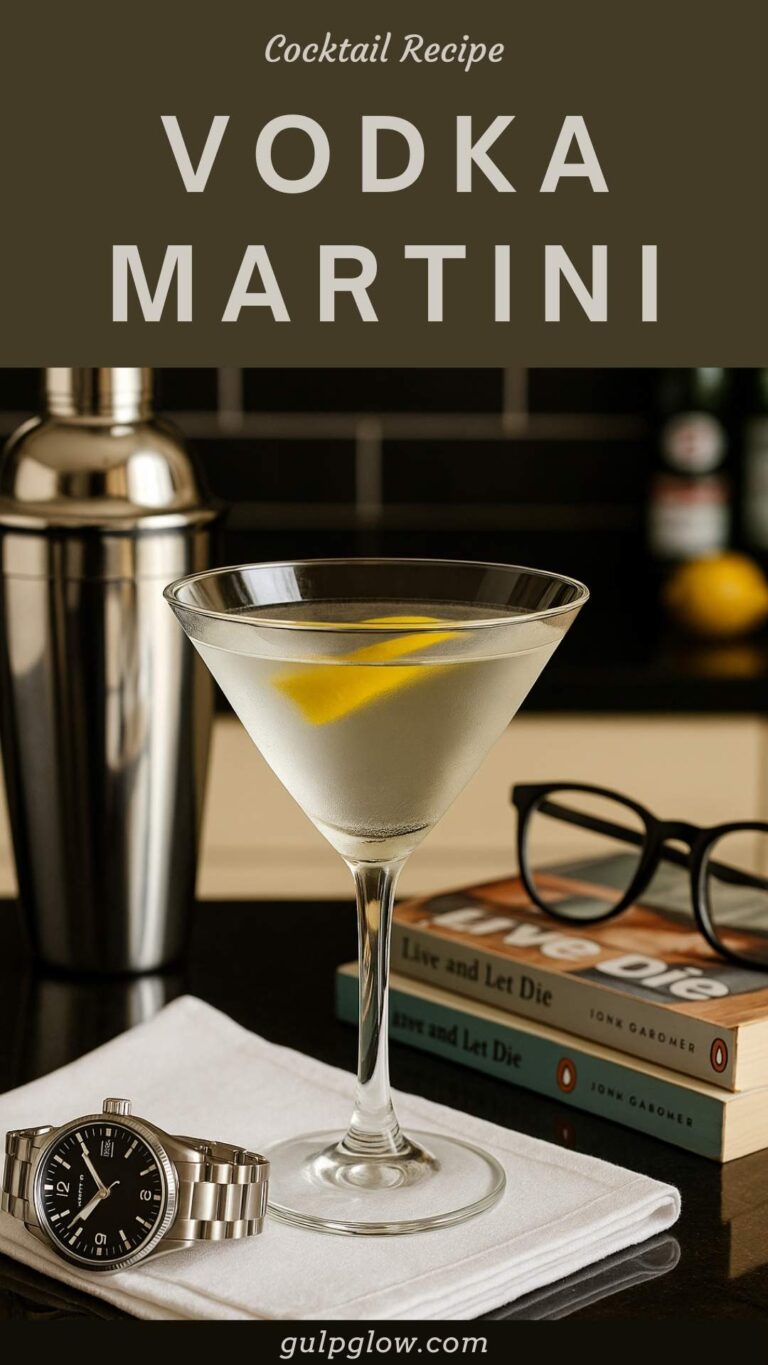Barrel-Aged Negroni: Time-Tempered Elegance in a Glass
The Barrel-Aged Negroni is a sophisticated evolution of the classic Negroni, where equal parts gin, sweet vermouth, and Campari are married together inside a small oak barrel, left to rest and mellow for weeks. The result? A smoother, rounder, richer version of the cocktail you know and love—one that trades sharp edges for depth, and introduces notes of vanilla, spice, and wood to a famously bitter profile.

This is a drink for the patient—and the curious. It transforms a cocktail that’s already steeped in tradition into something new through one simple variable: time. Aged cocktails, especially spirit-forward ones like the Negroni, develop complexity that can’t be mimicked with just bitters or syrups. In this version, the classic trio of ingredients becomes more integrated, more elegant, and more refined—yet still unmistakably a Negroni.
I was first introduced to the concept at a craft cocktail bar in San Francisco, where a small cask sat behind the bar labeled “Negroni—Drink This Week.” The bartender poured a dark, ruby-red liquid into a rocks glass over one perfect cube, garnished with a flamed orange peel. One sip and I knew: this was the Negroni redefined. Since then, I’ve been aging small batches at home, dialing in different gins and vermouths, and even playing with barrel toast levels.
Quick Facts: Barrel-Aged Negroni
Method: aged, then stirred and served
Flavor profile: bittersweet, oaky, balanced
How to serve it: over a large ice cube
Glassware: rocks glass
Alcohol content: ~24–26% ABV, ~21–23 grams of alcohol per serving
Ingredients
- 1 part gin (choose bold, juniper-forward or aged styles)
- 1 part sweet vermouth (high-quality and rich)
- 1 part Campari
- Optional: 2 dashes orange bitters per serving after aging
- Garnish: orange twist or dehydrated orange wheel
- Ice (preferably a large cube)
Barrel Notes:
Use a 1–5 liter new or neutral oak barrel (charred American oak, French oak, or toasted white oak). Smaller barrels age faster. For home aging, a 1-liter barrel will give you great results in 2–4 weeks, depending on preference.
Sanitize before use with boiling water or neutral spirit, then seal and hydrate. If reusing a barrel, make sure it hasn’t gone sour or too woody.
Equipment Needed
- Small oak barrel or barrel-aging bottle
- Funnel
- Jigger
- Stirring glass
- Bar spoon
- Strainer
- Rocks glass
- Sharp knife or peeler for garnish
- Optional: large format ice mold
You’ll also want labels and dates if aging multiple batches or experimenting with different spirits.
Step-by-Step Instructions
1. Mix your base Negroni.
Combine equal parts by volume:
- Gin
- Sweet vermouth
- Campari
Use a measuring cup or jigger to ensure equal ratios. For a 1-liter barrel, try:
- 350 ml gin
- 350 ml sweet vermouth
- 350 ml Campari
Stir briefly in a large pitcher to integrate before transferring to the barrel.
2. Transfer to your barrel.
Using a funnel, pour the mixture into your prepared barrel. Seal and place in a cool, dark place—ideally away from heat or sunlight.
3. Age to taste.
Let rest for 2 to 6 weeks, tasting once per week. Stir or rotate the barrel every few days to ensure even aging. A longer time produces more oak influence but risks over-extraction if left too long.
4. Bottle and store.
Once your desired flavor is reached, strain and funnel the cocktail into clean bottles. Label with the batch name and aging time. Store in the fridge to preserve the vermouth.
5. Serve and garnish.
To serve:
- Pour 3 oz over a large cube in a rocks glass
- Stir gently to chill
- Add 1–2 dashes of orange bitters (optional)
- Garnish with an expressed orange peel or dehydrated orange wheel
Sip slowly and appreciate the oak-softened harmony.
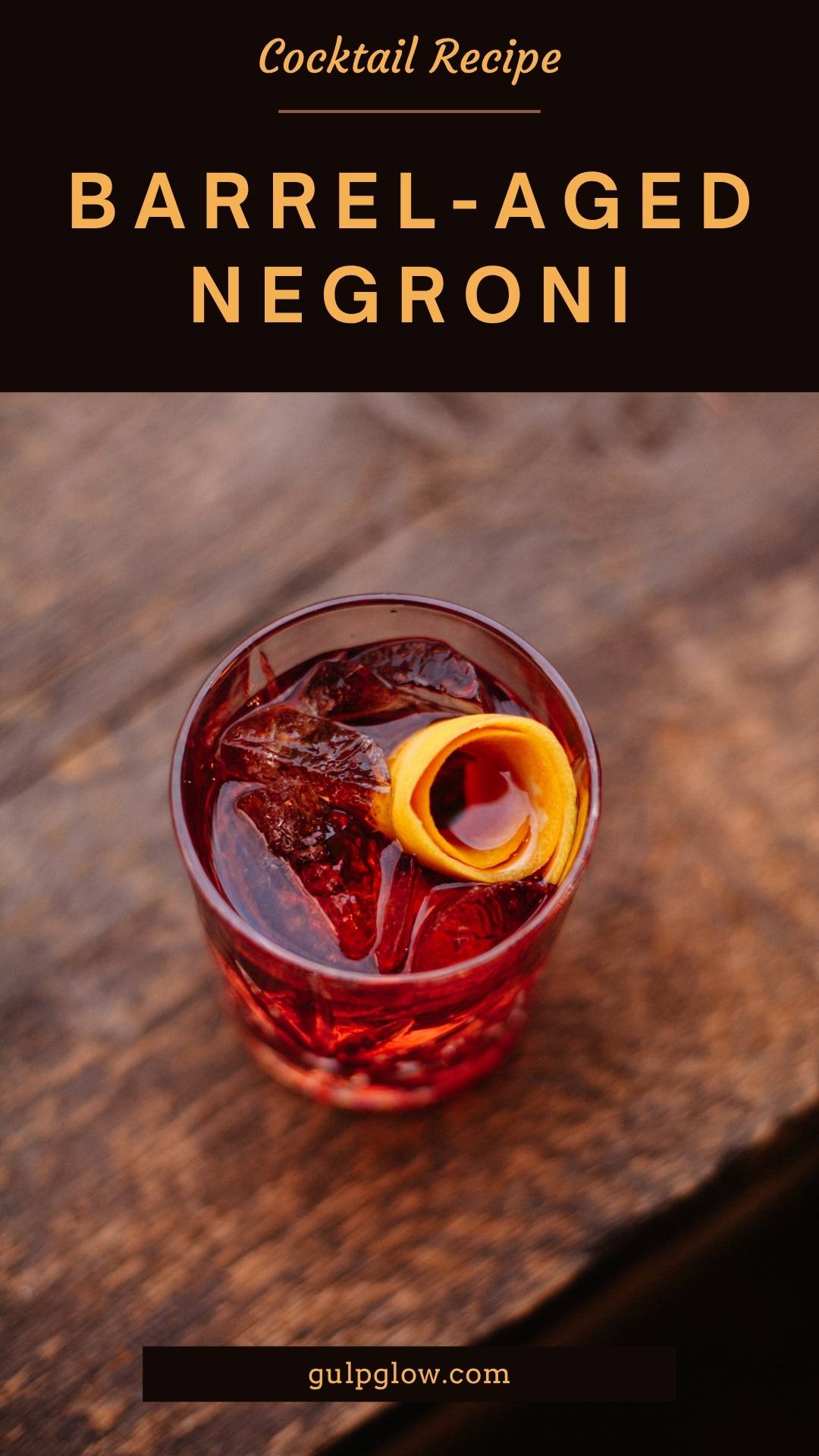
Flavor Profile and Tasting Notes
A barrel-aged Negroni isn’t a wild departure from the original—it’s a mature version, smoothed by wood and softened by time. The bitter and herbal notes remain but are less aggressive, replaced by warm vanilla, spice, and toast.
Tasting notes include:
- Bitter orange and cherry
- Oak, vanilla, and subtle smoke
- Herbal vermouth notes integrated smoothly
- A hint of chocolate or baking spice depending on barrel toast
The texture is silkier, and the bitterness is mellowed. The gin, once bright and piney, becomes rounded and earthy.
Pairs well with:
- Rich cheeses (blue, aged gouda)
- Charcuterie with olives and fig jam
- Grilled meats or sausage
- Dark chocolate, almond biscotti, or cannoli
Garnishing and Presentation
Keep presentation classic and refined. This is a cocktail with presence.
Glassware:
- Heavy-bottomed rocks glass is ideal
- Nick & Nora if served up, without ice
Garnish options:
- Orange twist (expressed over the drink and dropped in)
- Dehydrated citrus wheel
- Flamed orange zest for drama and aroma
- Large clear ice cube for visual elegance and slow dilution
Avoid elaborate garnishes—let the color and clarity of the aged cocktail shine.
Pairing Suggestions
The complexity of the Barrel-Aged Negroni invites bold and rich food pairings. It pairs especially well with savory or umami-driven dishes, but also works with select desserts.
Savory pairings:
- Duck confit or lamb chops
- Mushroom risotto
- Porcini ravioli or black truffle pasta
- Salumi, hard cheeses, and focaccia
Sweet pairings:
- Bittersweet chocolate tart
- Tiramisu
- Candied orange peel
- Coffee gelato or affogato
Great as a pre-dinner sipper, but equally effective as an after-dinner contemplative pour.
Cocktail History and Trivia
The Negroni was first mixed in Florence, Italy, in 1919, when Count Camillo Negroni asked his bartender to strengthen his Americano with gin. The equal-parts blend became a global staple—celebrated for its bittersweet charm and aperitivo edge.
Barrel-aging cocktails began trending in the early 2010s, thanks to pioneering bartenders like Jeffrey Morgenthaler, who championed the practice for enhancing spirit-forward classics. The Negroni was one of the first cocktails to be adapted—and it’s become one of the most successful.
What makes the Negroni ideal for aging is its stability and balance. None of the ingredients spoil quickly, and the bitter-sweet-herbal trio responds beautifully to time in wood.
Serving Suggestions
Serve the Barrel-Aged Negroni:
- As a house cocktail at dinner parties
- At Negroni Week events or Italian-inspired gatherings
- As a special menu item at bars or speakeasies
- In bottle form as a cocktail gift or wedding favor
- After dinner as a digestif alternative to amaro
For events, pre-bottle and chill the drink, then serve over ice with minimal garnish. It’s ideal for batch prep and elegant entertaining.
Want to impress guests? Pour tableside from a small decanter or personal flask. Nothing says curated experience like a cocktail aged in your own kitchen.
Alcohol Content and Alternatives
The Barrel-Aged Negroni maintains an ABV of about 24–26%, depending on your vermouth and gin. Aging doesn’t increase alcohol, but it can amplify the perception of warmth and strength.
To reduce alcohol:
- Use lower-proof gin or vermouth
- Serve over more ice and let it dilute slightly
- Use ¾ oz per ingredient instead of a full ounce
Mocktail version (non-alcoholic Negroni):
- 1 oz Lyre’s Dry London Spirit (or Seedlip Grove 42)
- 1 oz Everleaf Bittersweet or Ghia
- 1 oz Lyre’s Aperitif Rosso
Mix, then age briefly in a charred oak bottle or with oak chips to mimic the aging process. Serve over ice with orange peel.
Frequently Asked Questions (FAQ)
How long should I age my Negroni?
For a 1-liter barrel, 2–4 weeks is ideal. For larger barrels or reused barrels, extend up to 6–8 weeks. Taste weekly.
What if I don’t have a barrel?
Use barrel-aging kits or infuse with toasted oak spirals or chips in a glass jar. Age 1–2 weeks, strain, and store.
Does aging change the color?
Slightly—aged Negronis tend to darken a bit and develop a more amber hue due to barrel contact.
Can I use aged gin?
Yes! Barrel-aged gin enhances complexity, especially with charred or spice-forward barrels.
What happens if I age it too long?
The cocktail may become over-oaked, losing its balance and becoming woody or tannic. Always taste regularly and pull the batch when it hits the sweet spot.
Barrel-Aged Negroni Recipe
Ingredients (per 1-liter batch)
350 ml gin
350 ml sweet vermouth
350 ml Campari
Directions
- Combine all ingredients and stir briefly.
- Pour into a sanitized oak barrel or jar with oak chips.
- Age in a cool, dark place for 2–4 weeks.
- Taste weekly; once aged to your liking, bottle and store.
- To serve, pour 3 oz over ice, garnish with orange peel.
Conclusion
The Barrel-Aged Negroni is a testament to how time and craft can elevate even the most iconic cocktails. With its mellowed bitterness, enhanced depth, and silky oak finish, it turns a bold aperitivo into a sipping experience worthy of contemplation. Whether you’re aging a small batch for yourself or preparing bottles for your next dinner party, this is one drink that proves some things really do get better with age.
